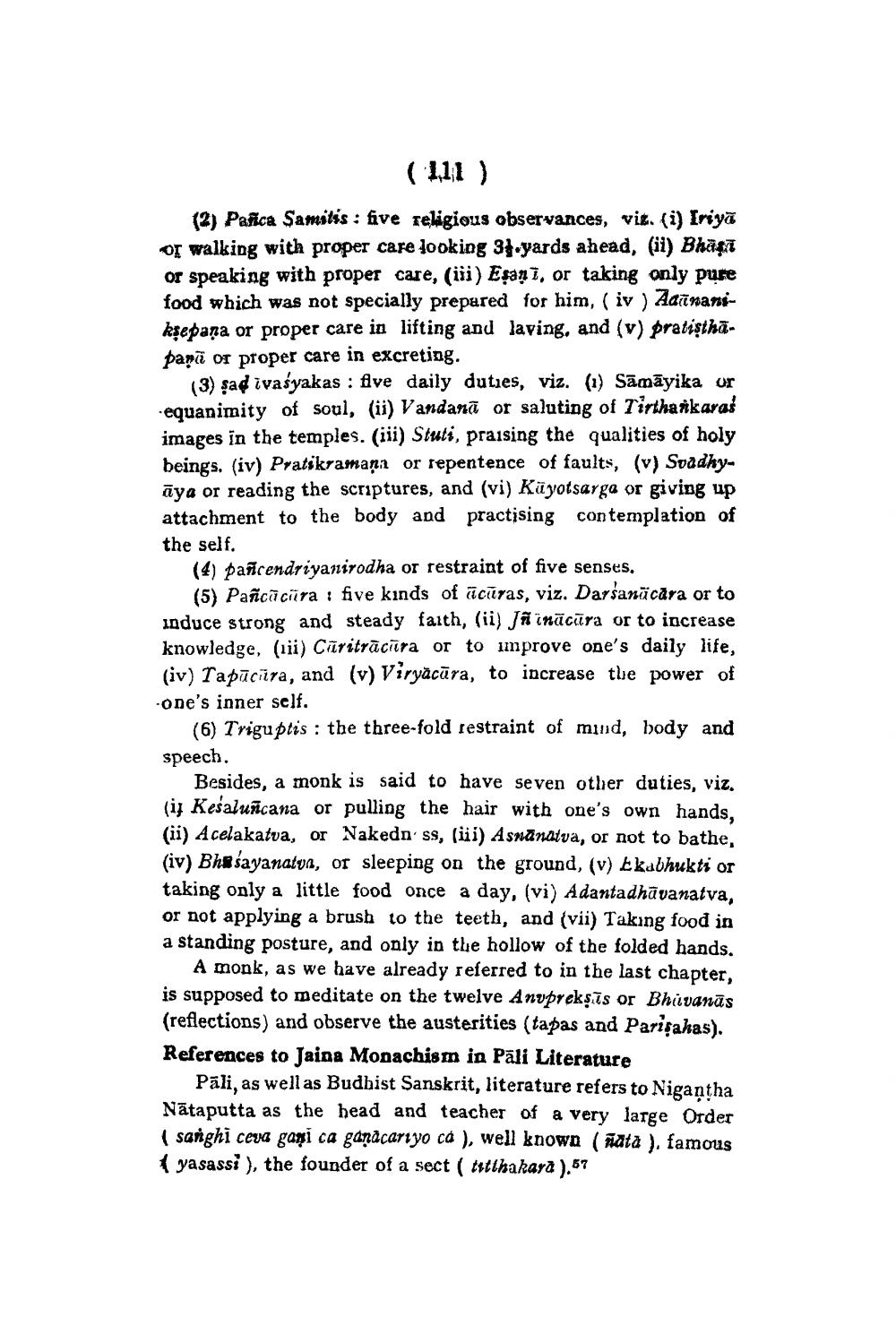________________
(2) Pafica Samités : five religious observances, vit. (i) Iriya of walking with proper care looking 31.yards ahead, (ii) Bhaga or speaking with proper care, (iii) Esani, or taking only pure food which was not specially prepared for him, (iv) Aainaniksepana or proper care in lifting and laving, and (v) pratişthapara or proper care in excreting.
(3) şad ivašyakas : five daily duties, viz. (1) Sāmāyika or equanimity of soul, (ii) Vandanā or saluting of Tirtharkaras images in the temples. (iii) Stuti, praising the qualities of holy beings. (iv) Pratikramana or repentence of faults, (v) Svadhyāya or reading the scriptures, and (vi) Küyotsarga or giving up attachment to the body and practising contemplation of the self.
(4) pancendriyanirodha or restraint of five senses.
(5) Pañcīcara : five kinds of ācāras, viz. Daršanācara or to induce strong and steady faith, (ii) Ji inücura or to increase knowledge, (ii) Ciritrāciira or to improve one's daily life, (iv) Tapācira, and (v) Viryäcūra, to increase the power of one's inner self.
(6) Trigu ptis : the three-fold restraint of mind, body and speech.
Besides, a monk is said to have seven other duties, viz. (i: Kesaluñcana or pulling the hair with one's own hands, (ii) Acelakatva, or Nakedn'ss, (iii) Asnanatva, or not to bathe, (iv) Bhríayanatya, or sleeping on the ground, (v) Ekabhukti or taking only a little food once a day, (vi) Adantadhāvanatva, or not applying a brush to the teeth, and (vii) Taking food in a standing posture, and only in the hollow of the folded hands.
A monk, as we have already referred to in the last chapter, is supposed to meditate on the twelve Anvprekşīs or Bhivanās (reflections and observe the austerities (tapas and Parisahas). References to Jaina Monachism in Pali Literature
Pāli, as well as Budhist Sanskrit, literature refers to Nigantha Nātaputta as the head and teacher of a very large Order ( sanghi ceva gani ca ganacarıyo cá ), well known (nata ), famous
yasassi ), the founder of a sect ( titlhakara ).57




